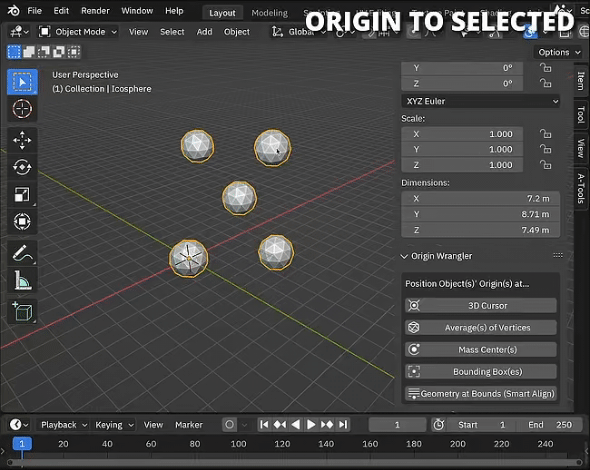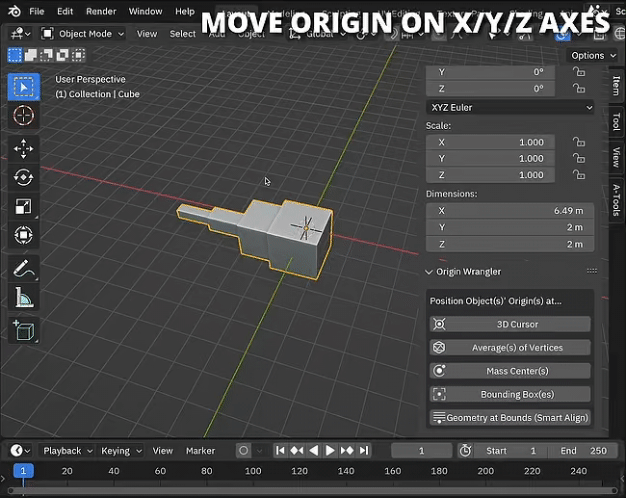Is the Blender Hard Ops + Boxcutter Bundle Worth Buying? Hard-Surface Modeling Using Hard Ops and Boxcutter Versus Vanilla Blender
28 July 2024
Hard Ops is one of the most popular Blender add-ons, now sold in a bundle with the Boxcutter add-on, which has amassed 39900 sales on Superhive. I’ve been a Blender user for about 6 years, and during most of that time, I only used the stock add-ons that came with Blender. Recently, I discovered Hard Ops and Boxcutter, and they changed the game. I think Hard Ops and Boxcutter are great add-ons, super useful and time-saving, and are totally worth the price. This article is not sponsored nor an advertisement for Hard Ops / Boxcutter.
A comprehensive Hard Ops overview video made by its developer.
Overview: What does Hard Ops do?
Hard Ops is an add-on developed by MasterXeon1001 aimed at making the hard surface modeling workflow in Blender more efficient and flexible.
Key Features
- Modeling Tools: Provides advanced tools for creating and manipulating hard surface models, such as boolean operations, mesh cleaning, and edge control.
- Workflow Enhancements: Offers features like quick mesh creation, beveling, and shading tools, which speed up the modeling process.
- Non-Destructive Modeling: Facilitates a non-destructive workflow with modifiers and boolean operations, allowing you to make changes without permanently altering the base mesh.
- Customizability: Includes a range of custom tools and settings that can be tailored to fit your specific modeling needs and preferences.
Overview: What does Boxcutter do?
Boxcutter is another add-on, made by the same developer, designed to simplify the process of cutting complex shapes and boolean operations in Blender.
Key Features
- Cutting Tools: Provides intuitive tools for cutting and carving shapes directly into your model. It’s especially useful for creating detailed and intricate cuts.
- Boolean Operations: Integrates closely with Blender's boolean operations, allowing for precise and clean cuts and intersections.
- User-Friendly Interface: Features an easy-to-use interface that makes complex cutting operations more accessible, even for users who might be new to hard surface modeling.
- Speed and Efficiency: Focuses on speeding up the process of creating complex shapes and details, enhancing productivity in your modeling workflow.
The Difference
In a nutshell, Hard Ops does management and provides a varied toolset for all sorts of modeling operations, whereas Boxcutter specializes in boolean operations as an advanced tool for performing booleans efficiently.
How exactly is using Hard Ops and Boxcutter different from using the boolean and bevel modifiers that Blender has out of the box?
The main modeling features that Hard Ops and Boxcutter are best known for build on top of operations and modifiers that Blender already has. But Hard Ops and Boxcutter make them much faster to do by saving the user clicks and time. Over time, the add-ons save the artist significant amounts of time and reduce fatigue from repeated keystrokes and button-pressing.
Booleans
In stock Blender, to do a boolean—for instance, cutting a circular inset/depression into 1 face of a cube, you have to create a cylinder, add a boolean modifier to the cube, set the boolean modifier’s type to "difference", and assign the boolean modifier’s object to the cylinder.
In hard-surface modeling workflows, booleans are extremely common. It’s not uncommon to use 10+ booleans in a hard surface modeling project. And the time it takes to set up every single boolean modifier manually adds up.
Contrast that tedious workflow to the far more streamlined Boxcutter workflow. Boxcutter allows you to draw or "drag out" a shape that you want to cut into a mesh that you’re editing, and it sets up your modifiers for you, saving you time.
In Hard Ops, you have an "everscroll" feature that lets you scroll through the other objects that are booleaning the active object, and you can apply any boolean by pressing the F key. Saves time.
Boxcutter has boolean types such as slice and inset that Blender doesn’t. The inset boolean type is like Blender’s face inset operation but as a boolean. Super useful.
Edge Data
Blender has different types of edge data: sharp normals, edge creases, UV seams, and bevel weights. In stock Blender, they need to be set seperately.
In Hard Ops, multiple or all of these edge data types can be set to be edited simultaneously. Very useful.
Modifer Management
In stock Blender, modifiers are ordered manually. Hard surface modeling workflows often use lots and lots of modifiers, and manually ordering long stacks of them can get tedious.
Hard Ops lets you specify a sort order for your modifiers. For example, boolean then bevel then subdivision. Super useful. In a boolean workflow, you don’t need to sift through long stacks of modifiers and re-order the modifiers each time you add new ones.
Hard Ops has lots and lots of handy quality-of-life time-saving functions that add up. Hard Ops lets you apply all modifiers of specific types, e.g. all of an object’s boolean modifiers. This feature saves time when you have lots of boolean modifiers and you want to keep a bevel modifier and a weighted normals modifer at the end of the stack.
If you do hard-surface modeling in Blender, you probably use metallic materials and surface imperfections or grunge textures on the models you create. Consider trying out CG Meerkat’s shader pack of 15 physically based metal materials (created based on scientific measurements of physical metals) that has rust/corrosion/tarnish built in and comes with 5 surface imperfection/grunge textures that add touches of realism to hard-surface materials like metal, plastic, and glass.






